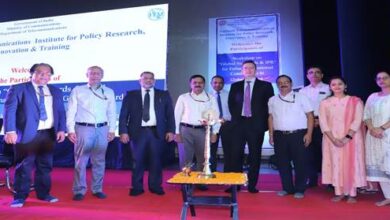Connecting through crisis: The urgent need for disaster-proof telecommunications

As the monsoon season approaches, recent natural calamities foreshow the challenges ahead.
Thunderstorms, lightning strikes, and Kalboishakhis have already battered many parts of the country, heralding a period where disasters will occur more frequently. This presents significant challenges for the telecommunications industry in ensuring uninterrupted connectivity.
In early March, fierce nor’westers ravaged multiple districts, severing over 350,000 electricity connections managed by the Bangladesh Rural Electrification Board (BREB). Approximately 70,000 consumers in regions including Pirojpur, Narsingdi, and Kishoreganj faced power outages. With storms and lightning claiming at least nine lives across six districts, Bangladesh braces for tougher times ahead as the peak disaster season looms, emphasizing the urgent need for robust contingency measures.
During major cyclones, more than 80% of telecom Base Transceiver Station (BTS) sites face commercial power failure due to power transmission line damages, transformer faults, service line disconnections, circuit breakers, and relay faults. In addition, more than 60% of BTS sites experience power failures lasting more than 12 hours, with some taking more than seven days to restore.
The knockout of power is the telecom industry’s biggest challenge. Although battery backups are available, they typically last for 2-6 hours depending on the tower’s location and demand. Relying solely on backup batteries or any other alternative sources is neither practical nor cost-effective to keep a BTS site operational. Therefore, priotising grid restoration at the earliest becomes crucial to maintaining a stable communication network across the nation.
What goes wrong during a disaster?
To illustrate the gravity of the situation, let’s reflect on Cyclone Mocha, which struck the southern part of Chattogram on May 14th, 2023. With winds roaring at speeds of 220-230 km/hour, the cyclone inflicted widespread damage across Cox’s Bazar, Bandarban, and Chattogram. The uncertainty surrounding the safety of loved ones during such events is palpable, with even minor storms capable of distrupting power and cellular service temporarily. However, the impact of cyclones can endure for days or even weeks, causing agonising waits for families and friends to respond to messages.
In the aftermath of Cyclone Mocha, the damage was stark: multiple towers in Cox’s Bazar and Teknaf laid crippled, rendering approximately 60% of cell sites turned inactive. Heartbreaking stories emerged from global media outlets, underscoring the struggles of individuals unable to seek aid or reassure their loved ones due to communication disruption.
Similar challenges resurfaced on November 17, 2023, with Cyclone Midhili’s assault affecting nearly 70% of the country’s terrain, resulting in a decline in grid availability and prolonged otages for cell sites. Proactive measures like premptive shutdowns by power authorities before Midhili’s landfall depleted battery backups, leaving a significant region without telecom network coverage even before the cyclone’s impact.
Setting an industry-standard in disaster response
To set an industry standard in disaster response, EDOTCO Bangladesh is committed to taking proactive steps to protect both people and vital infrastructure. As storms approach, EDOTCO’s network infrastructure management team springs into action, preparing to minimize damage and ensure uninterrupted service. Expert technicians and engineers are strategically deployed with suitable equipment, and cell sites are equipped with automated alarm systems to track issues like power loss or data disruption.
This system enables the carrier to track where issues are occurring. During storms like this, most of the problems are related to power. Connectivity problems may occur more frequently during the recovery period, as power companies work to clear debris and repair downed lines. The storm service operations center closely monitors alarms and alerts, preparing the field force to deploy.
Post-disaster measures to restore connectivity
After the storm subsides, engineers begin addressing the outages, with carriers providing updates on their network status and steps taken to repair infrastructure. Measures include deploying portable generators at critical hubs, points of presence (POPs), and priority cell sites, as well as repairing and refueling existing generators, and closely monitoring alarm systems for any connectivity issues during the recovery period.
The number of cell site outages in a specific area varies depending on the availability of wireless service to consumers in that region. Because cell towers often provide overlapping coverage, a 20% outage rate doesn’t necessarily mean that 20% of the area is not getting any service.
Collaboration is the key
Collaboration is essential in mitigating the impact of disasters on telecom infrastructure. The declaration of Telecommunications services as an essential service by Honorable Prime Minister Sheikh Hasina underscores the urgency for coordinated action and support from government, power authorities, and NGOs. Recovery plans formulated by the Ministry of Disaster Management must integrate with the Telecom Network and facilitate seamless collaboration with Network Infrastructure Companies to ensure swift disaster recovery.
Power sector authorities play a crucial role in ensuring uninterrupted power supply and minimal infrastructure damage during disasters. Priotizing the recovery of the telecom network and accelerating power restoration efforts are imperative for continuous network availability during emergencies.
In conclusion, the Bangladesh Rural Electrification Board needs to prioritize grid restoration within four to six hours for a stable communication system for the country. Swift action in this regard is imperative to guarantee the resilience of our telecommunications infrastructure during crises and enable effective communication for all citizens, particularly in times of need.



